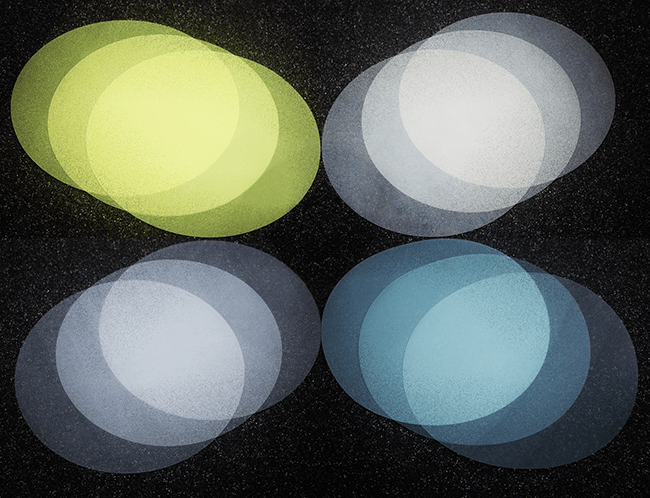Choosing between PSA-backed and non-PSA-backed lapping film
FOC currently offers 480 distinct products in its lapping-film category. The variations include type (material), particle size (grit), manufacturer, and options for pressure-sensitive adhesive (PSA) backing. Of the 480 items, 354 are FOC's trademarked brand, ÅngströmLap™, and 133 of these items, or 40%, have PSA backing.
View the Types of Lapping Film Offered by Fiber Optic Center
| Type | Vendor | Items | Without PSA | With PSA | ||
|---|---|---|---|---|---|---|
| 155 | 113 | 42 | ||||
| ÅngströmLap | 100 | 61 | 39 | |||
| 3M | 55 | 52 | 3 | |||
| Silicon Carbide | 96 | 55 | 41 | |||
| ÅngströmLap | 80 | 44 | 36 | |||
| 3M | 16 | 11 | 5 | |||
| Aluminum Oxide | 153 | 97 | 56 | |||
| ÅngströmLap | 118 | 70 | 48 | |||
| 3M | 35 | 27 | 8 | |||
| Final Film | 25 | 24 | 1 | |||
| ÅngströmLap | 13 | 13 | 0 | |||
| 3M | 10 | 9 | 1 | |||
| NTT-ME | 1 | 1 | 0 | |||
| Seikoh-Giken | 1 | 1 | 0 | |||
| Flock Pile | 27 | 13 | 14 | |||
| ÅngströmLap | 19 | 9 | 10 | |||
| 3M | 8 | 4 | 4 | |||
| Totals | 456 | 306 | 152 | |||
| ÅngströmLap | 330 | 201 | 133 | |||
| 3M | 124 | 100 | 20 | |||
| NTT-ME | 1 | 5 | 0 | |||
| Seikoh-Giken | 1 | 1 | 0 | |||
What's the reason for considering PSA-backed film? The main factor has to do with how the assembly manufacturer secures the lapping film to the polishing pad or plate. The goal is to avoid slippage, to make sure the film is not slipping on the pad or plate instead of polishing the connector’s tip.
The bottom layer of lapping film usually is a mylar substrate. PSA-backed film has the adhesive on the backside of the mylar. It is supplied with a paper backing that the user peels off to expose the adhesive layer. This is then pressed onto the polishing plate to attach the film securely, preventing slippage. The adhesive backing is the only physical difference between PSA and non-PSA film.

Photo by Dave Arruda
Generally, PSA-backed film is most useful with polishing processes that use a glass plate, and non-PSA film can be used effectively with processes that use a rubber polishing pad. Typically, glass plates are used for flat tips, such as MT/MPO type connectors, and rubber is used to get a rounded or radius-ed tip. Thus, most process for making multi-fiber assemblies (MT/MPO types) use PSA-backed film. For single-fiber polishing (cylindrical ferrules), non-PSA backed film is most common.
With glass plates, PSA-backed film is the most practical option. Polishing MT/MPO types requires use of flocked films, with alumina, cerium oxide, or silicon dioxide abrasives, which typically are more expensive than diamond films, whether PSA or not. Thus, the additional cost of the PSA backing is a smaller percentage of the film cost. This means that PSA-backed flock films can be worth the additional cost, even though flock films typically are for only one polishing step.
Another consideration with PSA-backed film is the need to make sure the glass plate is clean after the film is removed. The adhesives are designed for temporary use, so the film can be peeled off the pad after use. Sometimes, there can be residual adhesive left on the glass, which must be cleaned off. Glass pad manufacturers such as Domaille and Seikoh-Giken offer glass pads with "frosted" or lightly textured surface, as opposed to perfectly flat glass. These alternatives reduce the surface area to which the PSA sticks, making the films easier to remove after polishing.
We have seen some companies use non-PSA flocked films for MT/MPO polishing on glass pads and use a small piece of double-sided tape to keep the film adhered to the glass pad. This can work, but it adds more time and introduces more potential for errors or inconsistent results. FOC recommends PSA-backed films for MT polishing on glass plates, regardless of glass surface – frosted or flat.
With rubber pads, the smooth surface can "grip" the film's mylar base, or hold it with "stiction." Note that the rubber pad should be cleaned carefully beforehand. The widespread practice among assembly makers is to apply a very thin film of water to help the non-PSA film stick to a rubber pad. This requires some experience to get the right amount, as the film can slip with too much or too little water. Thus, a PSA-backed film may save some time with rubber pads.
Rubber pads often are used with diamond films, which can be used multiple times for single-fiber polishing – possibly up to 20 times or so. This means the additional cost of PSA backing is relatively small per use. Of course, the non-PSA films, once adhered to the rubber pad, should be suitable for multiple uses without re-seating the film onto the pad. So the time-savings vs. the cost of PSA backing is spread over multiple uses, and the choice of PSA may be a matter of the user’s experience and preference.
We note that PSA-backed film can have a small effect on the tip’s geometry – it can create additional rounding. This is not necessarily a problem, but it’s important to be aware of it. The PSA backing adds another soft layer or an additional element of cushioning, so it will result in more rounding of the part. The diameter of the ferrule also can be a factor in this, and an LC (1.25-mm ferrule) may show more of this additional rounding than a connector with a 2.5-mm ferrule. Generally, the extent of the rounding caused by the PSA backing is insignificant.
As a final factor in this discussion of PSA and non-PSA film, we note that Seikoh-Giken offers a special glass pad with a very thin layer of tacky, silicone material permanently applied to the surface. This material adds "grip" in terms of film slippage, somewhat like that of a rubber pad. This option allows for use of non-PSA films for polishing MT/MPO type connectors. It is currently available on five-inch diameter plates, which can be used on any machine accommodating this size.



